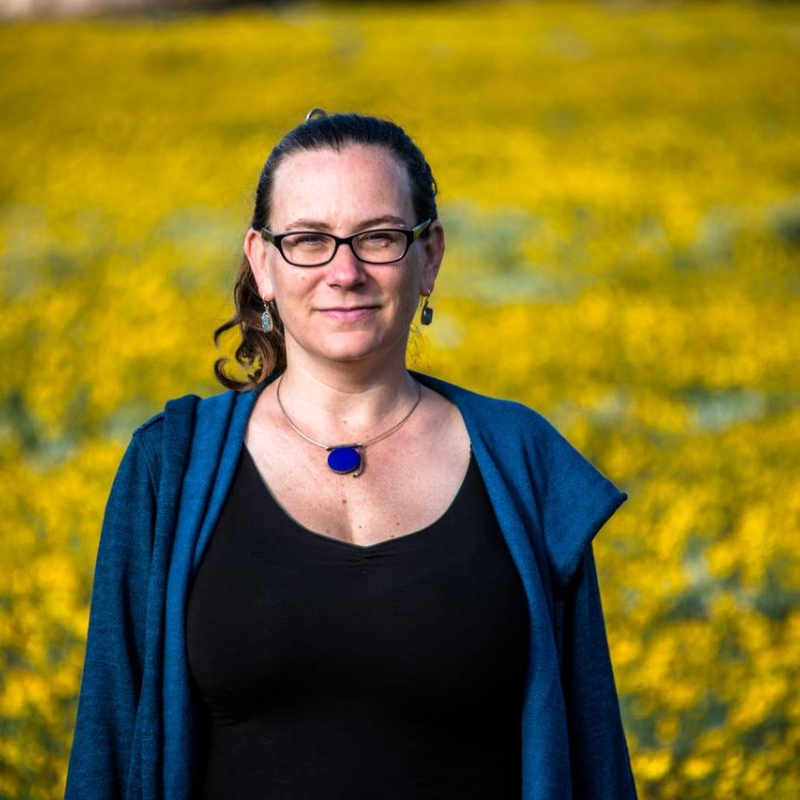Like much of life, our Torah does not have a happy ending.
At its seeming conclusion, we are left with the image of Moses on the mountaintop, gazing into the promised land and dying without ever being able to enter it. This is a moment of tragedy for him and of grief for his people. Every year on Simchat Torah, Rav Ebn Leader offers up this sacred moment as one full of intense yearning. He invites us to make contact with our own inner unfulfilled longings, and then together we all walk around the bima in circles while singing. In that liminal space between endings and beginnings, a full range of emotions moves through us, the power of which then creates space for something new to emerge, bereshit.
Yet of course this year, Simchat Torah is not only Simchat Torah. How can we possibly dance and sing with this much sadness, rage, pain, and even terror possibly gripping our nervous systems on this first yahrtzeit? Where is the simcha? Should we even try to feel joy?
Find more commentaries on Simchat Torah.
A mindset that pervades much Hassidic literature teaches that intense emotions like these can actually serve as unparalleled fodder for inviting simcha — on condition that we allow them to move through us. When our emotions keep looping and are not expressed, we stay in a cycle of reactivity that brings more pain. Contemporary trauma experts, such as Dr. Resmaa Menakem, echo this sentiment when defining trauma as a “stuck” aspect that keeps an experience or pattern on repeat. Because of this, the instruction to physically move underlies many effective therapies. Psalm 126 offers a poetic image of such a transformation:
The ones who plant with tears will harvest with joyous song.
The goer goes (halokh yelekh) and weeping (u’vakho), carries the trail of seed
Will indeed come with songs of joy, carrying his sheaves.
(Psalm 126: 5-6)
When we can move (halokh yelekh) and weep (u’vakho), we plant seeds of the highest order — sowing an inner field where we tend to our most tender parts. This planting of tears is an investment in our inner life that brings concrete results — here described as sheaves, bundles of nourishment. When we can move through it — Rebbe Nachman recommends dancing, and tears also work – our grief softens in a way that nourishes us. When metabolized like this, our strong emotions naturally invite simcha. We need not try to do anything.
Simcha is not like other Hebrew descriptions of joy — gila or ditza, for example — which have a more active connotation. Simcha brings a felt sense of aliveness, regardless of what life circumstances we weather. And simcha is not only a feeling. It’s a commitment to receiving our experiences of the world with an open heart.
When we give our strong emotions the attention they seek and honor them, they spiral us into a state of being more open to new perspectives. This new place is like the empty space after the end of our written Torah scroll that, on this day, cosmically links to the empty space preceding the beginning of our Torah scroll. This creative processing births new worlds. It is, literally, a genesis. Bereshit.
In the 14th century, authors of Tikkunei HaZohar so loved the possibilities brought through new frames that they offered 70 interpretations of this first word of the Torah. They play with its letters, rearranging them to find more and more innovative ways to understand creation. In their 10th arrangement, the letters form the phrase shir ta’ev, which means “song of longing.” (Tikkunei Zohar 24b) “In the beginning” becomes synonymous with a universal song. We, too, sing this song when we feel our desire to belong, or we feel our grief upon losing what we’ve loved and we cry out.
Find more commentaries on hope in times of pain.
Can we sing our longings this year in a way that lets all the feelings come through? Can we allow our heartbreak to summon us toward something new?
While working for social justice, we typically direct our efforts toward doing. Yes, action is important. Yet, sometimes we must slow down for what can be even more challenging: to feel our feelings. Have we truly moved through what we experienced last year on this day? That’s one gift of this yahrtzeit… to continue to grieve our loss communally.
As we sing and dance in circles this Simchat Torah, may we embrace our pain and its gifts. As we move together and weep, may those tears plant seeds for a new world to emerge.
Rabbi Lee Moore is a ritualist, applied theologian, and facilitator of embodied prayer. A student of Rav Ebn Leader, she can be found moving on dance floors from the Cuyahoga River Valley to the Sinai Desert to northeastern Appalachia. More on her offerings can be found at knowinglee.org.

